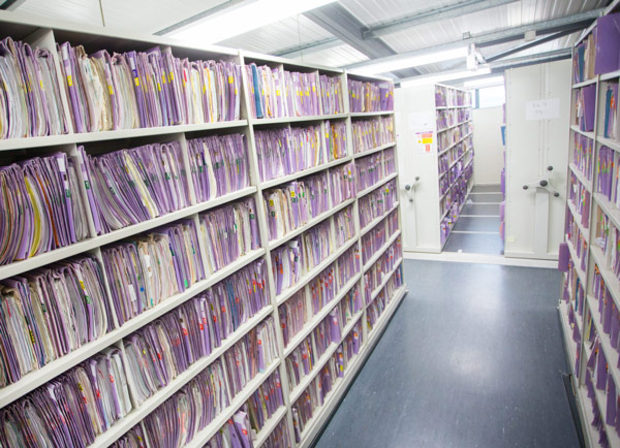Case Study | 4 Million Medical Records Managed Intelligently
Tracking & Tracing Healthcare
Challenge
Belfast Health and Social Care Trust is the largest health and social care Trust in the United Kingdom which delivers health care services to approximately 340,000 citizens in the Belfast metropolitan area. The Trust manages four million medical records in six archives and off-site storage facilities. In 2015 the Trust commissioned the digitisation strategy for the archived documents.
Background
The Trust maintains various IT systems which hold patient health information. Medical records covering various areas are still filed as hard copies. Due to growing numbers and size of the patient records, the manual process of locating and identifying the records using barcodes has been becoming increasingly unproductive. The objective of the project was to make the Trust independent from manual processes and outdated systems. An innovative RFID technology was required to create an efficient access to the records management.
Solution
By means of the Kathrein ARU 3500 IoT gateway of the latest generation in combination with the Kathrein CrossTalk software suite, an important digital link has been created. This way, it is possible to avoid stand-alone solutions and data silos by using a standard middleware layer. The time-consuming barcode scanning process of the records in storage facilities has been replaced by a GS1-certified intelligent tracking solution. Each medical record has an RFID tag and each archive, records trolley and hospital corridor has been equipped with RFID readers. Kinsetsu has integrated the records management solution with the CrossTalk digital bridge so that the hospital employees can easily monitor and quickly locate health records across the hospital site.
Result
IoT solutions help organisations to achive digital transformation by creating a more efficient and, above all, quicker data access. Moreover, the costs associated with intensive manual processes are significally reduced. Gaining strategic benefits from the IoT application requires careful planning and analysis to avoid end-point solutions, data silos and the use of unsuitable technologies. The introduction of IoT also creates new demands in areas such as security and interoperability. A further objective is to make the management, storage and use of patient health records completely paperless by 2020.
Download as PDF
Case Study (September 2017 | de)
